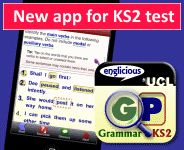Spoken language and literature
In this exercise, students look at two examples of English language and describe their characteristics. What each one actually represents may surprise you.
Goals
- Describe the features of some examples of English language.
- Try to determine from the features where the example might have come from.
Lesson Plan
The teacher explains that today, we will look at two examples of English language and try to describe them as well as we can.
Slide 1 displays a text extract. Ask the students to work in pairs or groups to describe the language they see on the slide. What do they observe? What is happening in terms of vocabulary and grammar? After 5-10 minutes of work, invite each group to present a feature of the language that they have found. Features might include:
- Pauses
- Incomplete sentences
- Informal phrases like all I'm saying
- First person pronouns
- Commands like look
- Informal vocabulary like closer and job
- Regional words like dollar
- Shortened words like 'stead
What do the students think this extract is? They are likely to conclude that it is spoken language, with just one speaker. They are right. But it may be surprising that this is in fact language written by the playwright David Mamet, who wrote it to resemble real speech, complete with interruptions and pauses and mistakes, in the play Glengarry Glenn Ross. Ask the students to discuss the following questions about the Mamet extract:
- Is it literature? Is it good literature?
- Is it easy or difficult to write in a way that mimics real speech?
- What techniques do you think Mamet may have used in order to effectively mimic real speech?
- Do you know any other writers who mimic real speech so closely?
- Why might a writer choose to mimic real speech? Why might a writer prefer not to?
Slide 2 displays another text extract. Once again, ask the students to work in pairs or in groups to describe it. After 5-10 minutes of work, invite each group to present a feature of the language that they have found. Features might include:
- The presence of two speakers
- First person pronouns (I and me indicate that a speaker is speaking about himself/herself)
- Fillers like uhm,
- The speaker's failure to pull words or ideas to mind
- The speakers using each other's names
- Present progressive verbs indicating action (and discussion) in progress
- Questions and responses
- Informal lexis like go berserk
What do the students think this extract is? This is spoken language with two speakers. In fact, this is a real transcript of a real conversation by real people, recorded by linguists as evidence for natural language in use. The recording comes form our corpus. Ask the following questions:
- Is the recording similar to Mamet's writing? In what ways?
- If Mamet's writing is literature, is this recording literature? Why or why not?
As a closing activity, look at the differences between the two texts, to see if it's possible to discern that one is real speech, the other written by a playwright.
- What are the differences?
- What are the similarities?
- Do you think that your favourite fictional TV shows represents speech realistically?
- How do TV shows differ from Mamet and from the real conversation extract?
Welcome!

Englicious is totally free for everyone to use!
But in exchange, we ask that you register for an account on our site.
If you’ve already registered, you can log in straight away.
Since this is your first visit today, you can see this page by clicking the button below.
- Printer-friendly version
- Log in to view or leave comments

